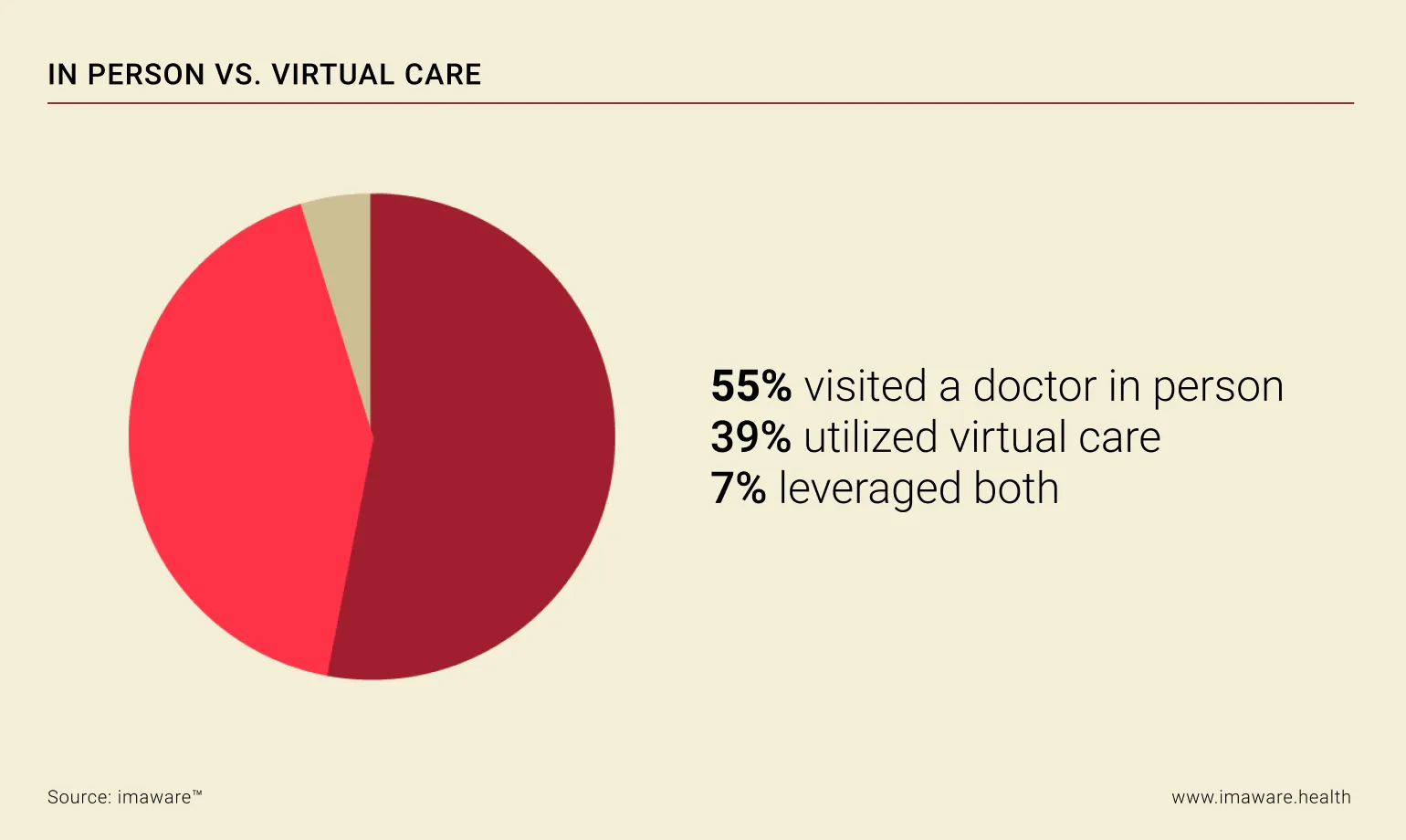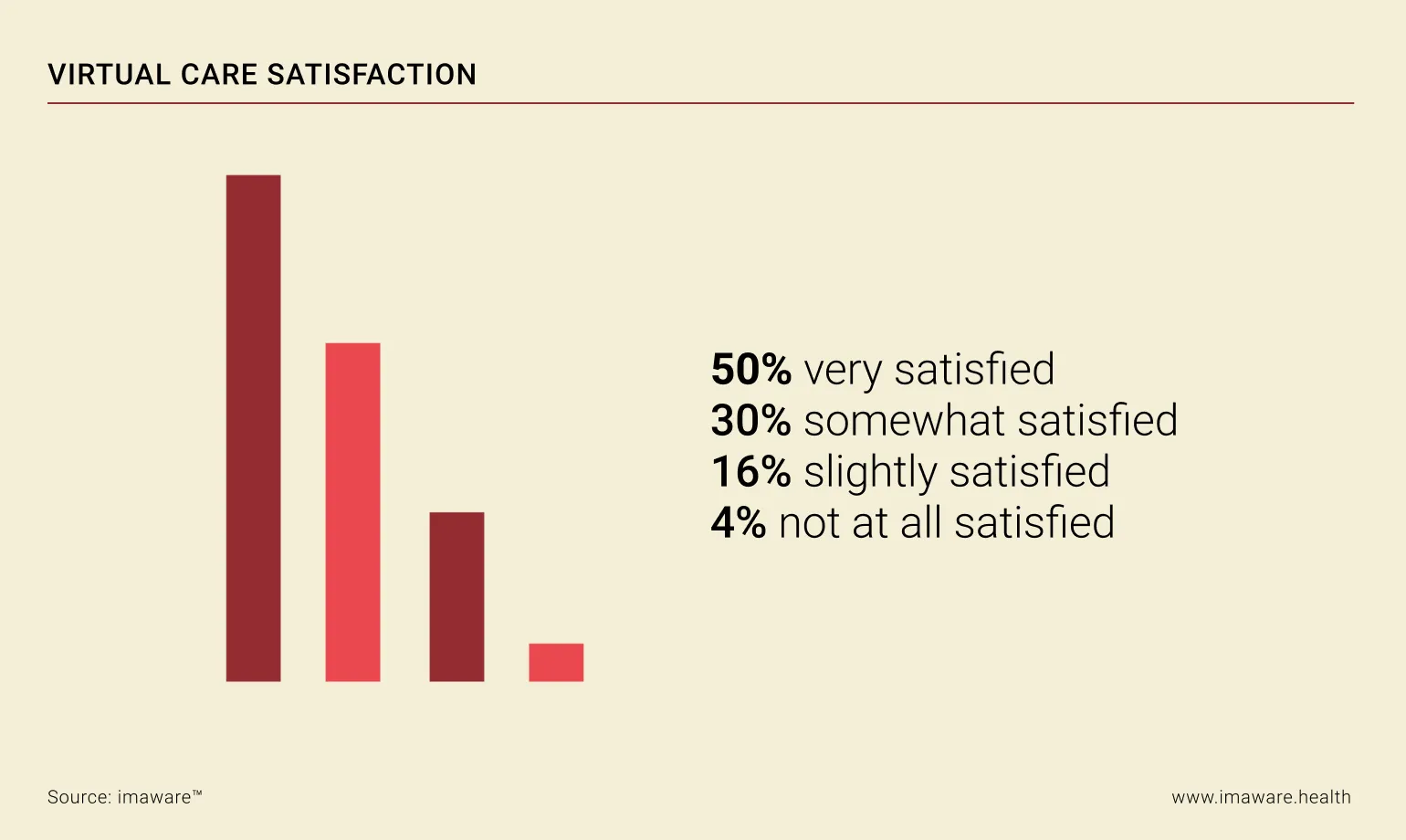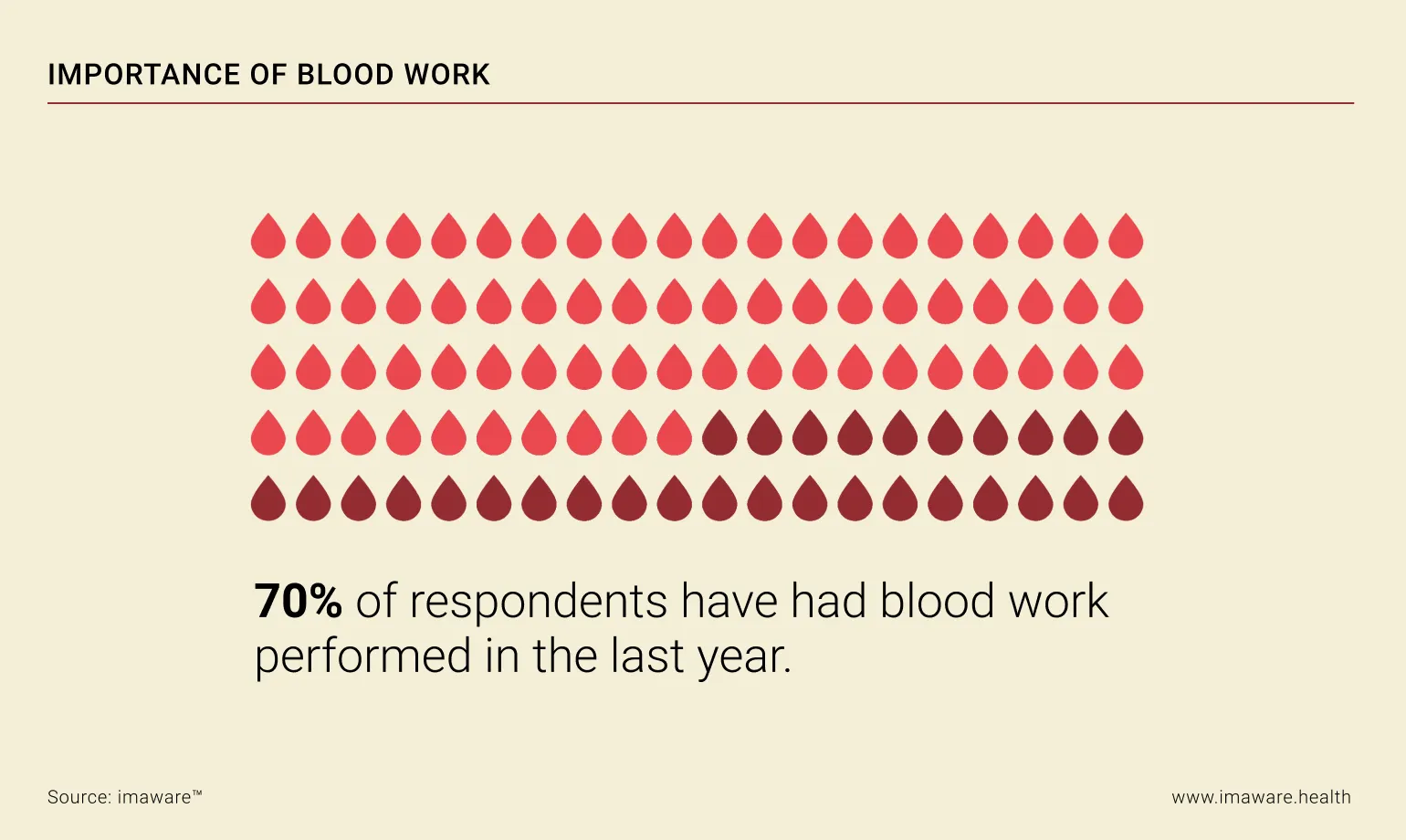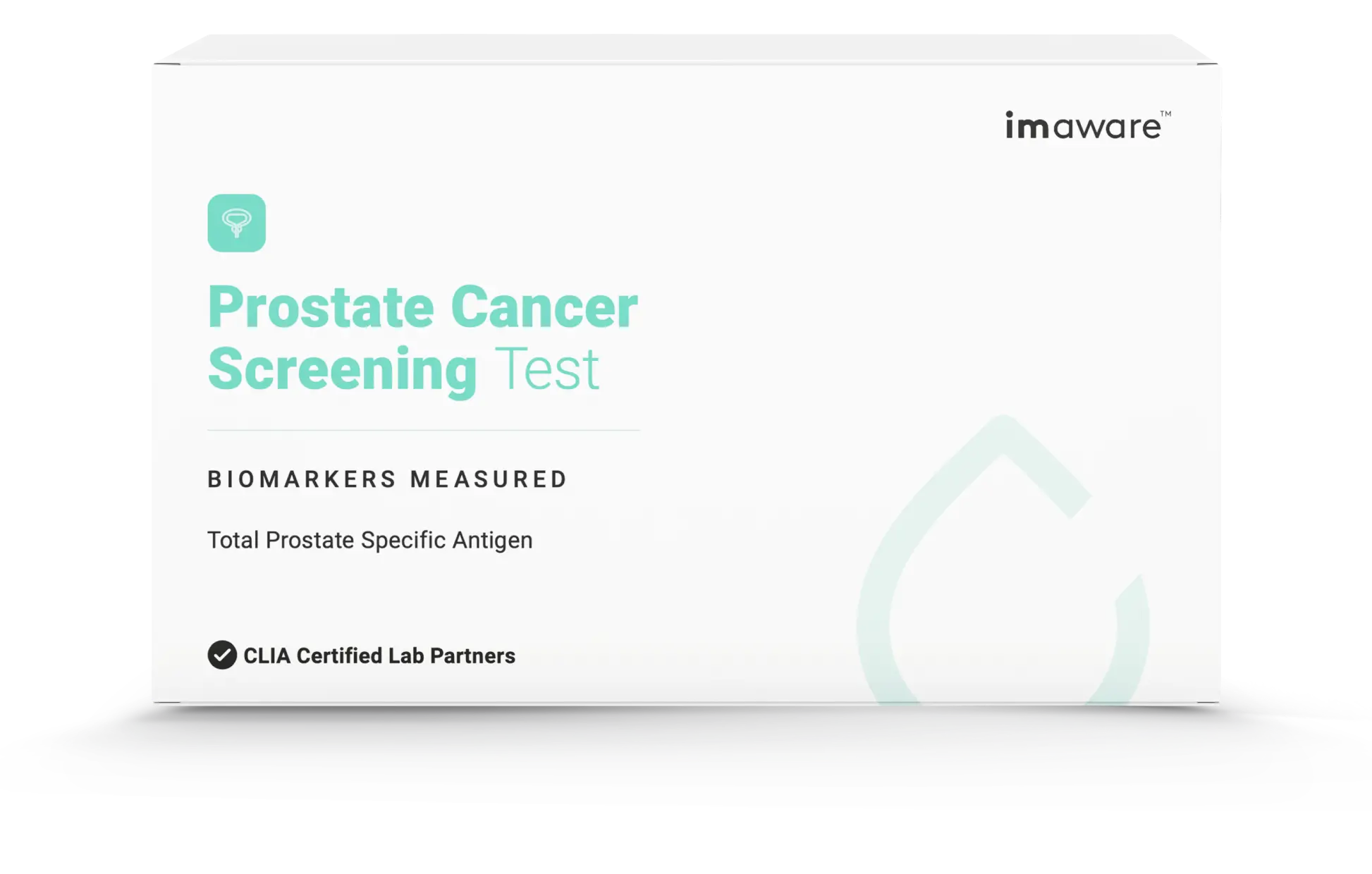Virtual Visits up 39%: How COVID Normalized Virtual Healthcare in America
Despite initial fears the pandemic would discourage people from important doctor visits, our recent survey indicates Americans were largely able to stay on top of their check-ups — by embracing virtual healthcare like never before.
A year later, how has personal healthcare changed?
In February 2021 we carried out a study of 1,000 people across the US to find out how the COVID-19 pandemic impacted their approach to personal healthcare in the last year. We knew that virtual health had already started to transform how people think about, access, and experience high quality care, but data from the first months of the pandemic suggested that patients were foregoing care at an alarming rate.
But the world changes fast. Our new survey demonstrates that patient behavior has significantly evolved over the course of 12 months, now that we’re a full year into our “new normal”. It’s clear that digital services continue to play an increasingly important role in our response to Coronavirus, which has inevitably led us to where we stand today: the tipping point of a healthcare revolution.
How did COVID disrupt Americans’ doctor visits?
There’s no doubt about it: the pandemic has caused major disruptions in the US healthcare system, presenting particularly problematic challenges to those living with a chronic condition. Others have been missing preventive care for illnesses such as diabetes or cancer screenings, which ultimately results in delaying a diagnosis. And in many cases, people were avoiding hospitals and doctor offices altogether — especially during the first few months of the pandemic.
In a study conducted by Jama from March to mid-July 2020, 41% of adults surveyed reported foregone care — and more than one-quarter of them cited fear of COVID transmission as their primary concern.
But the data from our own more recently completed survey paints a much different (and more encouraging) picture. Despite our hypothesis that patient visits would remain lower than normal, which was supported by other research, our survey actually showcased a dramatic change in behaviour for the better, with 83% of total respondents reporting they have in fact visited a doctor in the last 12 months despite a lingering pandemic.
So, what changed in the second half of the pandemic?
As we dive deeper into how people managed their care over the last 12 months, it becomes clear that the way people are accessing their healthcare services is coming to a crossroad. While 55% of those polled visited a doctor in person, 39% of our survey respondents utilized virtual care, and a total of 7% leveraged both. This marks a 39% year-over-year increase in virtual healthcare access among Americans, based on a pre-pandemic survey by Accenture, which reported only 19% of US consumers had taken their care online. These behaviors suggest that virtual healthcare is trending in the right direction as the general population adapts — and will likely remain the norm well beyond Covid-19
Data suggests these changes in patient behavior are here to stay.
Gallup reported that while telehealth usage rates, for example, may have declined from their peaks in the early months of the pandemic, public desire for telehealth in the US has only continued to grow, with 50% of people saying they are likely to use it in the future as of September 2020. According to another survey conducted by The Harris Poll in December 2020, roughly 65% of Americans plan to continue to use telehealth after the pandemic ends.
This shift truly reflects the future of care, a balance of digital and physical attention to one’s health while leveraging multiple resources to get the job done. This new model will require new thinking when it comes to coordinating care, with more emphasis on patient-empowering tools like imaware's at-home screening tests to seamlessly bridge the gap between physical and virtual healthcare.
More patients are choosing virtual — and many are more satisfied.
The American Journal of Managed Care writes that one of the most dramatic examples of pandemic-induced disruption is the heightened use of virtual health care. The spark for this acceleration came near the onset of the pandemic as CMS loosened telehealth and HIPAA guidelines for Medicare and commercial payers quickly followed suit.
Of course, there’s plenty of room for improvement. Gallup 2020 data shows that only 19% of Americans are "very satisfied" with the quality of medical care in the US, a figure that has remained largely constant over the past two decades. Our survey suggests virtual healthcare is a step in the right direction; 50% of respondents were very satisfied with a virtual visit and 30% were somewhat satisfied -- suggesting an increase in satisfaction thanks to better UX, user friendliness, and both physicians and patients alike being more comfortable with video call interactions.
Bloodwork still a priority
Another finding from our survey was that 70% of respondents have had blood work performed in the last year. Blood tests provide a wealth of information, making them an important component of fully understanding a person’s health. Specifically, they can help doctors evaluate how well organs are working, diagnose diseases and conditions, identify risk factors for heart disease, assess how well your blood is clotting, and check whether medications are working.
65% said they would prefer at-home blood tests
What if you could skip going to the lab for bloodwork? 65% of survey respondents would choose to have their blood work checked (self administered) at home, indicating that care today must be available anytime, anywhere.
With new at-home testing options like imaware, that desire for self administration can be fulfilled — and it comes with many added benefits.
Take the test from the comforts and safety of home. Our 3-step testing process provides peace of mind, no appointment necessary.
Quickly and easily collect your blood sample and ship it back to our lab. Receive your physician verified results in under a week.
View confidential and accurate results online in your secure portal, which was built with leading-edge encryption and security features and is HIPAA compliant.
Use our easy-to-read digital lab report to review your results and engage your healthcare professional.
What this means for the future of healthcare
Overall, the findings from our survey demonstrate both the undeniable impact of Covid-19 on the US health system, and the general population’s increased willingness to seek out smarter, modernized alternatives to traditional care. Experts predict the home diagnostics market will grow to US $6 billion by 2027 (FutureWise Market Research) as an increasing number of patients skip the in-person doctor visits in favor of the convenience and privacy of their own home. As power continues to shift into the hands of patients, it’s clear that tools like imaware will become more important than ever in the years to come — and self-screening is just the beginning.








